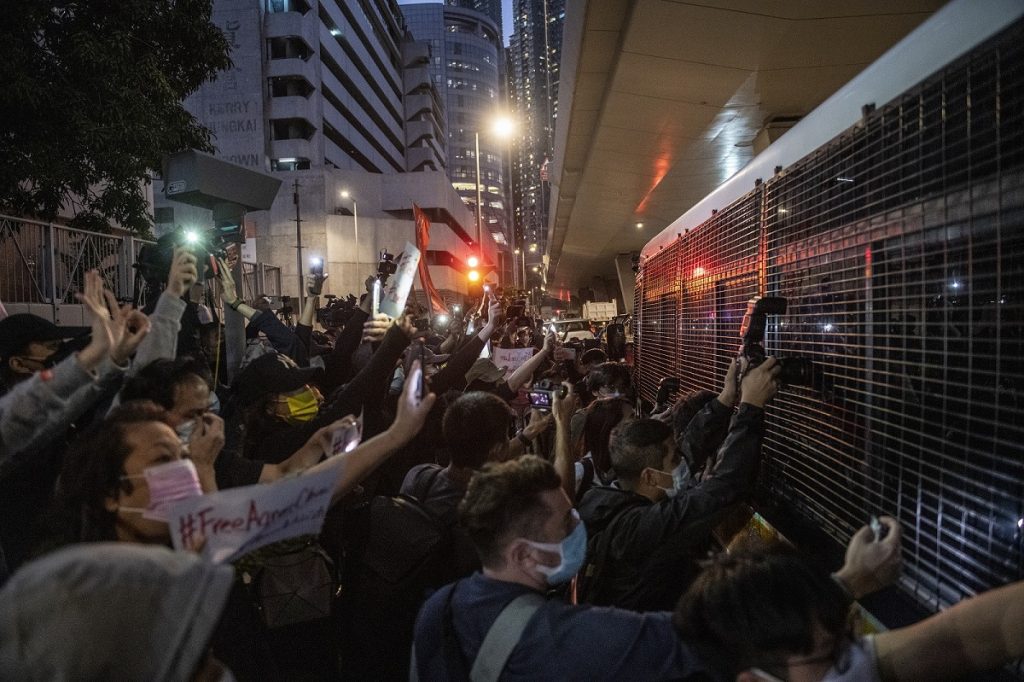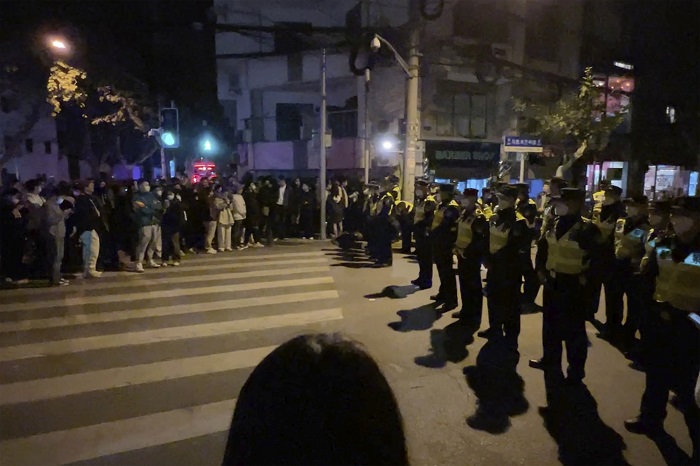world news online news
By Matthew Walsh with Ludovic Ehret in Beijing
Security services were out in force across China’s major cities Tuesday, which for the time being appeared to have quelled nationwide protests calling for political freedoms and an end to Covid lockdowns. online news
The country’s leadership faced a weekend of protests not seen in decades as anger over unrelenting lockdowns fuelled deep-rooted frustration with its political system.
A deadly fire last week in Urumqi, the capital of the northwestern region of Xinjiang, was the catalyst for the outrage, with protesters taking to the streets in cities around China.
The demonstrators said Covid-19 restrictions were to blame for hampering rescue efforts, claims the government has denied as it accused “forces with ulterior motives” of linking the fire to the strict Covid controls.
Anger over lockdowns has widened to calls for political change, with protesters holding up blank sheets of paper to symbolise the censorship to which the world’s most populous country is subjected.
By Tuesday evening, a heavy police presence of hundreds of officers appeared to have been drawn back from the streets of a rain-drenched Shanghai, where weekend protests even saw bold calls for the resignation of President Xi Jinping, an AFP reporter said.
A broad effort by police to stop passersby taking pictures of the site of the protest also appeared to have been tapered down, they added, with one officer telling AFP that it “depends on the nature of the photo” but that there was no blanket ban in place.
But frustration with zero-Covid remained palpable.
“The (zero-Covid) policies now -– they’re just too strict. They kill more people than Covid,” one 17-year-old passerby, who asked to be identified only as Ray, told AFP.
He said he had been surrounded by police when passing through the area.
We are not foreign forces
In Beijing, AFP reporters saw a few marked and unmarked police vehicles but no sign of protesters at an intersection near the Asian Games Village, where a demonstration had been planned for Tuesday night.
Freezing temperatures of minus nine degrees Celsius (15.8 degrees Fahrenheit) likely also kept protesters away.
People who had attended weekend rallies in the Chinese capital told AFP on Monday they had received phone calls from law enforcement officers demanding information about their movements.
Some rallies did go ahead elsewhere on Tuesday night, however.
world news online news
At Hong Kong’s oldest university, over a dozen people led the crowd in chanting slogans such as “give me liberty or give me death”, just days after a similar solidarity protest led to school authorities calling the police.
“We are not foreign forces, we are Chinese citizens. China should have different voices,” one woman shouted, while another held a placard mourning victims of the Urumqi fire.
One Chinese student told AFP that he was worried about getting arrested under Hong Kong’s increasingly draconian political climate, but felt the need “to keep up the spirit of resistance”.
And in the neighbouring southern Chinese city of Shenzhen, a witness told AFP they had seen a heavy police presence in Huaqiangbei, a busy shopping area in the city’s downtown, after rumours of protests circulated on social media.
Around 150 police officers were seen within a 500 metre (1,640 feet) stretch of Huaqiang road, they said, alongside scores of black police vans.
Many died in vain
China’s strict control of information and continued travel curbs have made verifying protester numbers across the vast country challenging.
But the widespread rallies seen over the weekend are exceptionally rare in China, with authorities harshly clamping down on all opposition to the central government.
US President Joe Biden is monitoring the unrest, the White House said Monday.
And Britain on Tuesday summoned the Chinese ambassador in London for a rebuke after the arrest and alleged assault of a BBC journalist covering the protests in Shanghai.
Solidarity protests have also mushroomed around the world.

“Officials are borrowing the pretext of Covid, but using excessively strict lockdowns to control China’s population,” one 21-year-old Chinese participant in a Washington protest, who gave only his surname, Chen, told AFP.
“They disregarded human lives and caused many to die in vain,” he said.
Vaccination drive
China’s leaders are committed to zero-Covid, which compels local governments to impose snap lockdowns and quarantine orders, and limit freedom of movement in response to minor outbreaks.
But there are signs that some local authorities are taking steps to relax some of the rules and dampen the unrest — and that central authorities may be seeking a path out of the rigid policy.
China’s National Health Commission (NHC) announced on Tuesday a renewed effort to expand low vaccination rates among the elderly — long seen as a key obstacle to relaxing zero-Covid.
Many fear that opening the country up while swaths of the population remain not fully immunised could overwhelm China’s healthcare system and cause more than a million deaths.
Just 65.8 percent of people over 80 are fully vaccinated, NHC officials told a news conference.
China has also not yet approved mRNA vaccines, which are proven to be more effective, for public use.
The NHC also said local efforts “inconsistent with national policies” had caused a “great impact on people’s work and life”, and warned that “those who cause serious consequences will be held accountable in accordance with laws and regulation”.
However, it did not suggest a change in policy was imminent.
bur-oho-bys-hol/reb
© Agence France-Presse. All rights are reserved.
world news online news
Notes from APS Radio News
For example, in the US, which was one of the countries most affected by the virus, the average mortality rate has been .07%, according to Statista.
Statista is an award-winning service that compiles and analyzes various types of data.
Its clients include corporations and governments.
It’s been reported that in the US, for most age groups, the recovery rate has been 99%.
Dr. John Ioannidis, a physician-scientist at Stanford University and a specialist in evidence-based medicine, found that even among the elderly, the risk of dying from the virus was low.
In October of this year, DailySceptic.org had included this information it published in an article about Dr. Ioannidis:
In the new study, which is currently undergoing peer-review, Prof. Ioannidis and colleagues found that across 31 national seroprevalence studies in the pre-vaccination era, the average (median) infection fatality rate of COVID-19 was estimated to be just 0.035% for people aged 0-59 years and 0.095% for those aged 0-69 years. A further breakdown by age group found that the average IFR was 0.0003% at 0-19 years, 0.003% at 20-29 years, 0.011% at 30-39 years, 0.035% at 40-49 years, 0.129% at 50-59 years, and 0.501% at 60-69 years.
In various countries that imposed lockdowns and restrictions in 2020 and 2021, there have been increases in the number of suicides, instances of drug abuse, alcoholism, domestic abuse and instances of deferred medical care.
Millions of businesses were shuttered; many of those businesses closed permanently, resulting in shortages of goods and services
world news online news


